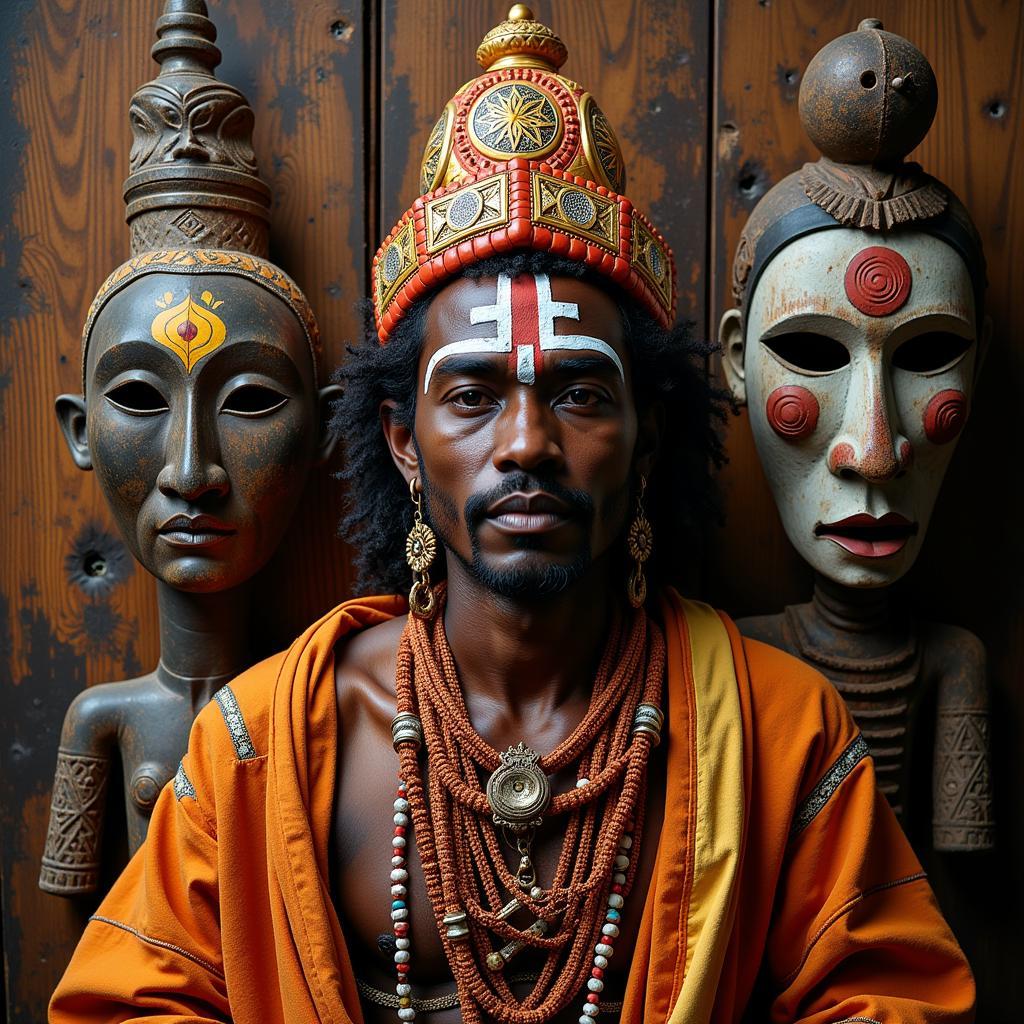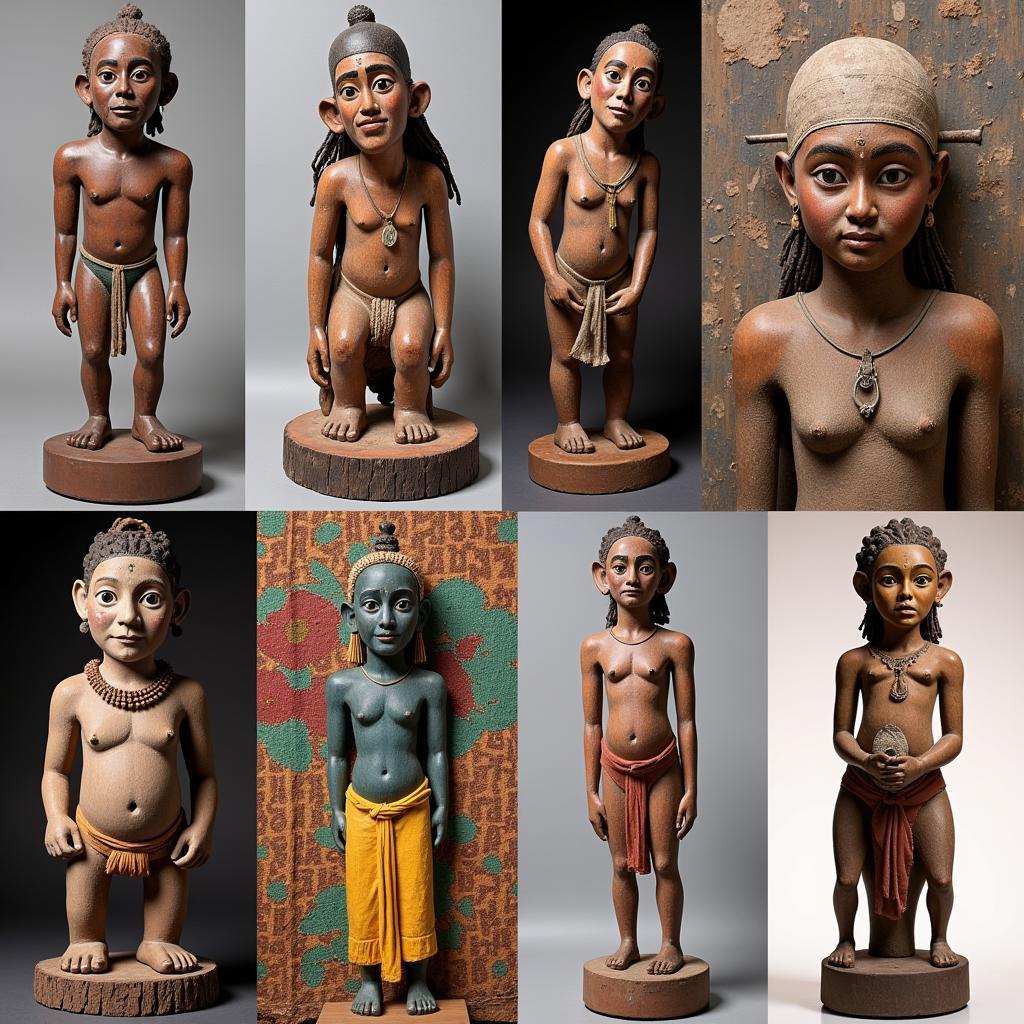Exploring the African Hanuman: Fact, Fiction, and Cultural Significance
The African Hanuman, a term often sparking curiosity and intrigue, refers to the presence and influence of Hanuman, the revered Hindu monkey god, within the diverse tapestry of African cultures. While not a native deity, Hanuman’s image and stories have, in various forms, found their way into certain African communities, leading to fascinating cultural exchanges and adaptations. This article delves into the intriguing story of the African Hanuman, exploring its origins, symbolism, and significance within the broader context of African spirituality and cultural exchange.
The Journey of Hanuman to Africa: Theories and Speculations
How did the tales of a Hindu deity reach the shores of Africa? Several theories attempt to explain this cultural crossover. One prominent theory links Hanuman’s presence to the historical trade routes connecting India and East Africa. Merchants, sailors, and travelers may have carried stories and depictions of Hanuman across the Indian Ocean, introducing him to coastal communities. Another theory suggests the influence of the Indian diaspora in Africa, particularly during the colonial era, as a contributing factor to the spread of Hanuman’s image and narratives. While the exact pathways remain a subject of ongoing research, these theories offer compelling explanations for the intriguing presence of Hanuman in certain African contexts.
The arrival of Hanuman in Africa wasn’t a singular event, but rather a gradual process of cultural osmosis. Through storytelling, religious practices, and visual representations, the image of the monkey god began to integrate into existing belief systems.
 African Hanuman Cultural Exchange
African Hanuman Cultural Exchange
Hanuman’s Symbolism in African Cultures
Hanuman’s symbolism in Africa, while influenced by his Hindu origins, often takes on unique local interpretations. He is sometimes seen as a protector, a symbol of strength and resilience, mirroring his role in Hindu mythology. In other instances, he is associated with nature, embodying the power and wisdom of the animal kingdom. This adaptability of Hanuman’s image highlights the dynamic nature of cultural exchange, where borrowed symbols are reinterpreted and integrated into existing belief systems.
It’s essential to note that the African Hanuman isn’t a universally recognized figure across the continent. His presence is localized, often found within specific communities that have historical ties to India or have experienced significant cultural exchange with Indian populations.
The African Hanuman and Local Deities: A Complex Interplay
The introduction of Hanuman didn’t necessarily displace existing African deities. In some cases, a process of syncretism occurred, where Hanuman’s attributes were merged with those of local gods or spirits. This blending of traditions created a rich and complex religious landscape, where different belief systems coexisted and influenced one another.
 Hanuman in African Spirituality
Hanuman in African Spirituality
Is there an “African Hanuman” deity?
While the term “African Hanuman” is used to describe this cultural phenomenon, it’s important to understand that it doesn’t refer to a separate, distinct deity. Rather, it signifies the adaptation and reinterpretation of Hanuman within specific African cultural contexts. The core attributes and stories associated with Hanuman often remain recognizable, but they are interwoven with local traditions and beliefs, creating a unique and fascinating blend of cultures.
How has Hanuman’s image been adapted in Africa?
Hanuman’s image in Africa has been adapted in various ways, reflecting the diverse artistic traditions of the continent. From wooden carvings to vibrant paintings, Hanuman’s representation often incorporates local styles and aesthetics. This artistic adaptation further reinforces the dynamic nature of cultural exchange and highlights the creativity with which borrowed symbols are reinterpreted and localized.
“The fascinating thing about the African Hanuman is how it showcases the fluidity of culture,” says Dr. Anika Patel, a renowned anthropologist specializing in African and Indian cultural interactions. “It’s not a simple transplantation of a deity, but a complex process of adaptation and reinterpretation.”
 Hanuman in African Art
Hanuman in African Art
The African Hanuman: A Testament to Cultural Exchange
The story of the African Hanuman serves as a powerful example of the interconnectedness of cultures. It reminds us that religious and cultural boundaries are not fixed but are constantly evolving through interactions and exchanges. This cross-cultural dialogue enriches both the borrowed tradition and the recipient culture, creating a vibrant tapestry of beliefs and practices.
In conclusion, the African Hanuman represents a fascinating example of cultural exchange and adaptation. While not a native deity, Hanuman’s presence in certain African communities highlights the dynamic interplay between different cultures and the ways in which religious symbols can be reinterpreted and integrated into existing belief systems. The African Hanuman story encourages us to explore the rich tapestry of global cultural interactions and appreciate the complexities of religious and spiritual traditions.
FAQ
- Is Hanuman worshiped widely in Africa? No, Hanuman’s presence is localized to specific communities with historical ties to India or significant Indian cultural influence.
- Did Hanuman replace African deities? No, in many cases, syncretism occurred, blending Hanuman’s attributes with those of local deities.
- Is there a separate “African Hanuman” god? No, it refers to the adaptation and reinterpretation of the Hindu deity within African contexts.
- How did Hanuman reach Africa? Theories suggest trade routes and the Indian diaspora as possible pathways.
- What does Hanuman symbolize in Africa? He is often seen as a protector, a symbol of strength, or associated with nature.
- How is Hanuman depicted in African art? His image is adapted to local artistic styles, reflecting the diversity of African art.
- What is the significance of the African Hanuman? It highlights the interconnectedness of cultures and the dynamic nature of religious and cultural exchange.
Need support? Contact us 24/7: Phone: +255768904061, Email: [email protected], or visit us at Mbarali DC Mawindi, Kangaga, Tanzania.




